- Home
- Simon Winchester
The Men Who United the States: America's Explorers Page 21
The Men Who United the States: America's Explorers Read online
Page 21
But then, once the blue smoke from the final cannon mouth had drifted away and the echoing around the Lake Erie shores had stilled, the orations began. The first was from Jesse Hawley, he of the Canandaigua Debtors’ Prison and the Hercules letters, and he made a gracious version of an I-told-you-so speech. There were others, most of them less brief and less memorable. Then the tow horses were prodded into motion, the boats in the flotilla eased away from the bankside, and they began to glide slowly in line ahead, eastward to the sea.
On the deck of one of the boats, Governor Clinton presided over two ornate American-made oak barrels, both of them filled with water from Lake Erie. They had a symbolic purpose that was clear from the start: they were to participate in what all knew was to be a wedding ceremony.
The floating procession took a full week to reach the halfway point at Albany, where the boats passed through the canal’s eighty-third and final lock,* and then entered the broad reach of the Hudson. The horses were then unhitched from the narrowboats, and a flotilla of well-polished and exuberantly decorated steamers then took the unpowered canal craft in tow. The entire fleet and its cargo of dignitaries, visionaries, politicians, and hangers-on—with the two barrels of precious lake water still intact—sailed majestically down the tidal stream. There were endless thunderous volleys of gunfire and fireworks displays from every community onshore, until after a day and a half of sailing and partying, the small navy reached New York City and the waters of the Atlantic Ocean.
It was November 4, a Friday. The wedding ceremony was scheduled for noon. It was a crisp, cool, gleaming morning. The official party, barrels and boxes and bottles in hand, boarded steamboats that were suited—as canal narrowboats were not—to the roll of the open ocean. And that rolling duly began, as most on board promptly noticed uneasily, just as the craft headed out past Governors Island and through the Narrows—over which the Verrazano-Narrows Bridge arches today—and into the wide expanse of Lower Bay.
New York State governor DeWitt Clinton pours a bucketful of newly transported Lake Erie water into the Atlantic Ocean off New York City, celebrating the opening of the long-planned Erie Canal in 1825. Shortly thereafter a keg of ocean water was taken to be poured into Lake Erie, to make matters even.
At the bay’s southern end, two low spits of land interrupt an otherwise perfectly flat marine horizon. On the left, as seen from the steamships, was Breezy Point, New York; and on the right, Sandy Hook, New Jersey. A line drawn between them would mark the limit of New York Harbor and the beginning of the open ocean. The boats hove to. Governor Clinton then picked up one of the kegs of water, and with squadrons of artists drawing furiously, he withdrew the bung, tipped the barrel, and poured a long gush of Lake Erie water down into the salt waters of the rolling sea. (As if this were not enough, one of the governor’s friends had brought with him thirteen additional bottles, which—he claimed—held waters collected from the Thames, Seine, Rhine, Danube, Nile, Gambia, Ganges, Indus, Orinoco, Plate, Amazon, Columbia, and Mississippi. These were all tipped into the Atlantic, too, though the precise reason for doing so went unexplained.)
This, at last, was the Wedding of the Waters, an event that had been designed and choreographed to its final seconds and was designed to be one of the iconic events in the history of a republic that was not yet half a century old.
No speech could do the moment justice, though many orators made the attempt. William Leete Stone Sr., a then popular journalist who wrote a massively long memoir of the day on behalf of the state, perhaps summed it up most succinctly. He took care to do so two weeks later, once the burghers of Buffalo had had their mirror moment, when they poured a barrel of ocean water into the waters of their lake.
All Europeans, he declared, had already begun to admire, and all America could now never forget, that those who planned and constructed the Erie Canal had “built the longest canal in the world in the least time, with the least experience, for the least money, and to the greatest public benefit.”
It was a warm early summer Sunday morning, and I was staying in a hotel, on the third floor of what had once been a textile mill in the village of Little Falls, in the Mohawk River Valley of central New York. The building first had been a flour mill; for most of its existence, though, it made army uniform cloth, notably for soldiers fighting the Mexican-American War. Even though stone buildings can often be cold, this one happened to be uncomfortably hot, and the night before, I had grumbled. The innkeeper had found a key and opened the window for me—letting the roar of the Mohawk River swell up from below and lull me to dreamless sleep.
The chasm, with its sheer dolerite cliffs, had long before squeezed the river into a fury of falls and rapids here. When the first upriver settlers arrived, they had been compelled to portage their canoes and flatboats up into calmer waters; in later years they paid fees to the builders of a small bypass weir and eased their boats around the white water.
But since 1820, the Erie Canal had sliced like a knife through Little Falls. A channel of perfectly flat and perfectly still water replaced the torrent of the Mohawk, and for years watercraft of considerable size could ease through town without difficulty. In midcentury the entire waterway had been enlarged, widened, deepened, and strengthened to meet the enormous new demands of commerce and bring millions of tons of goods downstream from the factories of the Midwest to the markets of New York—until the twentieth century, when the railways and the highways began to eat into the profits, as they would everywhere else in the world.
Though commerce had long since died away, and pleasure boats have a virtual monopoly instead, in Little Falls the widened and straightened Erie Canal is still there, in full working order, running halfway up the hillside on the far side of the river that I could hear churning over the rapids down in the gorge below. So I saddled up my bicycle and rode over the Mohawk River bridge and up onto the canal towpath that ran beside it.
At first the waterway was quite empty. The only sound was a faint hum coming from a tiny power station that took water from the canal down through its penstocks. Maybe once upon a time the station had provided the power for the factories here that made bicycles, tissue paper, bookcases, milking machines, and felt, or maybe for the plants that turned out endless rolls of seamless cheese bandage or churns and milk coolers for the local cheese-making industry that once dominated this corner of Herkimer County. Today it merely feeds into the grid, with just the faint hum and a white sigh of water passing down its spillway.
And then around a great rock bluff were the closed upstream gates of lock number 17. This is the lock with the largest rise of any on the system—forty-five feet, according to some guides; forty-one, according to others. On this Sunday morning, I expected the lock to be quiet, but the keeper—a new immigrant from Belorussia, a young man who was clearly having fun operating the machinery—was waving excitedly to a small boat lying in the stream below the downriver gates. He was gesturing to the crew to back up some yards, as he was about to open the gate’s sluices to empty the pound and let them into the lock.
Once the boat had backed safely away, he then pressed a button, and a white froth of boiling canal water erupted just below the gate, turning a previously quiet stream into a furious maelstrom. The skipper of the little boat looked briefly alarmed as his craft began to buck and dip in the torrent; he gripped his tiller firmly, white-knuckled, and did his best to keep his boat pointing head-on to the raging water. From my vantage point, I watched as the surface of the pound waters dropped, foot by foot, leaving the walls of the lock slimy with algae and weed.
It took ten minutes to empty the lock totally. Then the man from Minsk, businesslike and whistling cheerfully, pressed other buttons and sounded a horn. The immense steel lower gate, a counterbalanced portcullislike affair, was slowly winched up and out of the water, dripping sheets of water as it did so. The entranceway was now fully open, the lock closed at its upper end by the two miter gates I had seen from my bike, holding back a wall of water forty-five
feet high, a daunting thought.
Once the chamber waters had quieted, the small boat inched inward, settling itself halfway along. The skipper and his shipmate each took hold of a pair of dripping rope lines suspended from bollards on the berm above, which would hold their boat steady. The lockkeeper closed the lower gate and, with a quick warning and thumbs-up to the boatman, opened the upper sluices, which are not on the lock gates but are set into the walls of the chamber itself, and started filling the lock again.
There were ten minutes more of boiling upwellings, with the boatman smiling happily as he was steadily hoisted up into the warm Sunday sunshine as the chamber was filled. A final press of a final button, well-greased gears turned and well-oiled wires spun, and the miter gates swung open—and with a cheery wave, the skipper let go the lines, started his engine, and headed back into midchannel.
Before a minute had passed, he was rounding the bluff and sailing on toward lock number 18. I walked beside him as he was chugging slowly along, warming up his engine. He said he was going next to the small town of Ilion, where the Remington Company had once had a plant that made rifles and until 2007 still owned a museum that showed its complete range of typewriters, the more constructive side of its business.
He had started his voyage back at Albany. Thus far he had traveled 87 miles along the canal, and in locks like this—though none so tall—had been hoisted up a total of 410 feet above sea level. He now had 276 sailing miles to go, and though there were a few downhill miles to negotiate around Oneida Lake and the old Syracuse salt works that had helped finance the canal, in total he had another 155 feet to climb before he and his craft would be deposited on the wide inland ocean of Lake Erie. Where he might go after that—Chicago, perhaps, or Detroit, or even Duluth, because he was a Bob Dylan fan—he had no idea. But he would be up there in the high heartland of America, which world was then his oyster.
I asked him what he thought of the canal. He tried to answer, saying something along the lines that he blessed its existence, but at the very moment he opened his mouth, two fast freight trains went roaring by on the CSX lines that lay on the far side of the Mohawk, and they quite drowned out his voice. Because long-distance trains had put paid to the commercial future of most American canals, as they had elsewhere around the world, it seemed properly symbolic that his reply was being so obliterated. But then, when the expresses’ roaring had died away, he reminded me that the Lake Shore Limited, no less, had crashed spectacularly here in 1940, killing many people.* “Canals much safer,” he shouted, as he slid gently around the bend.
I put my bicycle over my shoulder, walked down the steps beside the lower gate, and cycled on down the towpath through early-morning mist. All soon fell quiet again, and before long it was just the empty river gliding by, the navigation path picked out by small buoys, and on both sides fields, cattle, and deep forests, little different from when the canal had been started two centuries before.
A few miles along the path, I came to an old mansion, the Herkimer Home. It had been built in the 1760s by a German migrant, Nicholas Herkimer, who had farmed here and sold provisions to those preparing for the trials of the portage. He had sided with the revolutionaries in the War of Independence and had been fatally injured, dying a true American hero. An obelisk stands as his memorial in a graveyard across from the main house.
It was perfectly silent. There were no cars, no visitors, no one apparently even in residence in the gatehouse—though maybe the occupants were asleep, I supposed, as this was early on a Sunday morning. There was just the ancient brick house set down in a clearing in the forest, a few old stone walls, green meadows sloping down on the one side to the water and rising on the other three sides up to the tree line, and beyond them the woods, endless, dark, and deep.
The Wedding of the Waters and the building of this canal had quite changed America, everybody said. And yet from down here on the waterside, and as I cycled slowly back along the towpath on that peaceful summer morning, it didn’t seem to have been changed at all.
THE LINKMAN COMETH
There is a rougher, ruder side to the American canal story, too. The cutting that was made along the Mohawk River Gap may have transformed itself in later years into something of an idyll, but the Chicago Sanitary Canal is, as its name suggests, a thing of raw utility only, an industrial, no-nonsense kind of waterway, and as we shall see, one that has unwittingly brought with it consequences today of more sinister moment than even its most ardent opponents can have imagined. Back when it was first conceived, it was a monster of a construction; its eventual existence, along with the wild nexus of railroads, did much to promote Chicago to its status as America’s second city.
The purpose behind its making was simple enough. The mid-nineteenth-century trade goods of the Great Lakes hinterland could pass through the Saint Lawrence River (if the Lachine Rapids allowed) to the ports of the northern Atlantic; they could be dispatched along the few hundreds of miles of the Erie Canal to the wharves of New York; or they could pass down south to the Mississippi River and then be shipped by way of New Orleans out into the Gulf of Mexico.
Of the three routes, the last made the most sense, most particularly for the Midwestern goods, those materials that were grown or mined or made around Lakes Michigan and Superior. But there was a problem: there was no physical connection between the Great Lakes and the tributaries of the Mississippi. Indeed, there was a geographically infuriating obstacle in the way, a low plateau of wide expanse, just a few dozen feet high but some miles wide, which separated the growing lakeside city of Chicago from the rivers of the West.
Two men are ultimately responsible for successfully breaching this low hill, and both are now all but forgotten for having done so. One is William Gooding, a self-taught engineer who cut his teeth on the Erie Canal, helping dig a bypass around Niagara Falls. The other, more nobly born (his family was loosely connected to the Jeffersons) was Isham Randolph—a Virginia forester who was first employed as an axman felling trees for a small country railroad. Their twin achievements, made serially, half a century apart, are little memorialized; the place where the infamously annoying hill once rose is now ingloriously obscured by what is claimed to be the world’s largest sewage treatment plant.
It was Jolliet, the French Canadian who had explored the upper Mississippi in 1673, who first remarked on how easy it should be to cut a small canal across the hill (though back then it was more hilltop marsh than hill), which he and his fellow explorers had crossed on their venturesome way from Lake Michigan westward. By doing so, Jolliet later wrote, traders could link the lake (and thus the Atlantic) with the Mississippi (and thus the Gulf of Mexico).
Jolliet already knew a little of artificial waterways. Though he was a native-born Canadian, he was well aware that a giant canal was at the time being built in France: the Canal du Midi, a 150-mile structure linking the Mediterranean to the Atlantic, had been begun six years before, though it would be another eight years before it was completed and opened to traffic. It had been delayed for years and had seemed quite daunting and complex. But here in America, said Jolliet, a similar linking of two oceans demanded only the building of a waterway no more than half a league (about a mile and a half) in length. It would, in other words, be almost trivial, a cinch.
Yet despite the project’s fine good sense and apparent simplicity, it was to be a long, long time before Jolliet’s dream was realized. Neither the British nor the French colonial administration pursued it during their respective paramountcies. Only when America was independent and Illinois became a state in 1818 did any serious discussion begin. By then the local Indian tribes—the Miami—had been either routed or forced to sign treaties beneficial to the settlers. One had given away absolute settlement rights to the site where Chicago now lies; the other ceded the strip of land that could one day be used for building a canal. It remained only to do the surveying, draw up the engineering plans, and find the money.
This all took time. For one thing, en
gineers and surveyors soon discovered that Jolliet’s Panglossian half-a-league forecast was utterly wrong; a workable waterway would have to be scores of miles long. Nevertheless, the economics of the idea made sense, and so on Independence Day 1836, with a company established—the Illinois & Michigan Canal Company—and with William Gooding hired over from the Erie Canal and with a goodly sum of money raised from the sale of three hundred thousand acres of Illinois farmland as a gift-in-aid by the federal government, ground was broken and building began.
The implications for Chicago became obvious from the moment the first pickax was thrown. Connect the lake to the Mississippi, and trade would commence as never before. The city consequently began to attract immigrants in huge numbers: in the dozen years it took to finish the canal, the population rose from zero to twenty thousand. Six years later it had tripled. It reached a million people by 1890—and all due to William Gooding, several thousand Irishmen and other workers brought over from New York State and around the world, and twelve years of backbreaking labor.
It took so long because the canal was much bigger than the one Jolliet had suggested. It was a fully formed waterway, sixty feet wide at the top, thirty-six feet wide at the bottom, and six feet deep. It was ninety-six miles long and had seventeen locks, four aqueducts, a giant pumping station with feeder streams from nearby lakes and rivers, and towpaths for the mules that would haul barges. It allowed vessels to pass without interruption from the lake to the new city of La Salle, on the Illinois River. From there it was a mere deepwater hop down the Illinois to its junction with the great stream beyond.
When the steamer General Thornton arrived in the middle of Chicago on the afternoon of April 19, 1848, bringing a load of sugar from New Orleans, a cascade of hitherto unimaginable events occurred: Chicago got its first telegraph wire, the Board of Trade opened its doors, the first steam-powered grain elevator started working on the lakeside docks, the first railroad connection was started—and suddenly the city seemed poised to become a vital fulcrum for commerce and business, conveniently halfway between East and West. Journeys that had taken fur traders three weeks and nineteenth-century farmers ten days could now be accomplished in less than a full day’s sailing. A torrent of trade goods flooded in: lumber, wheat, corn, stone, salt, and—perhaps in the long term most crucial—livestock bound for slaughter, the packinghouses, and the dining tables of the nation.

 The Surgeon of Crowthorne
The Surgeon of Crowthorne Korea: A Walk Through the Land of Miracles
Korea: A Walk Through the Land of Miracles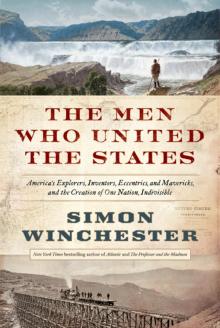 The Men Who United the States: America's Explorers
The Men Who United the States: America's Explorers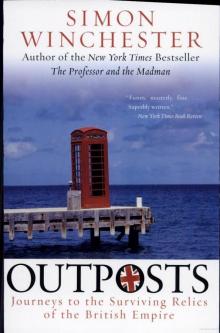 Outposts: Journeys to the Surviving Relics of the British Empire
Outposts: Journeys to the Surviving Relics of the British Empire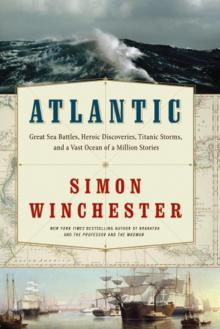 Atlantic: Great Sea Battles, Heroic Discoveries, Titanic Storms
Atlantic: Great Sea Battles, Heroic Discoveries, Titanic Storms The Professor and the Madman: A Tale of Murder, Insanity
The Professor and the Madman: A Tale of Murder, Insanity A Crack in the Edge of the World
A Crack in the Edge of the World The Perfectionists: How Precision Engineers Created the Modern World
The Perfectionists: How Precision Engineers Created the Modern World The Man Who Loved China: The Fantastic Story of the Eccentric Scientist
The Man Who Loved China: The Fantastic Story of the Eccentric Scientist The River at the Center of the World: A Journey Up the Yangtze
The River at the Center of the World: A Journey Up the Yangtze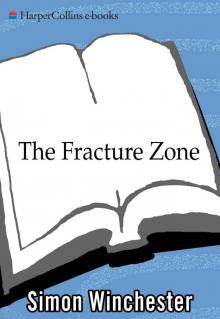 The Fracture Zone: My Return to the Balkans
The Fracture Zone: My Return to the Balkans The Map That Changed the World
The Map That Changed the World Krakatoa: The Day the World Exploded
Krakatoa: The Day the World Exploded The Man Who Loved China
The Man Who Loved China The River at the Centre of the World
The River at the Centre of the World Bomb, Book and Compass
Bomb, Book and Compass The Perfectionists
The Perfectionists The Meaning of Everything
The Meaning of Everything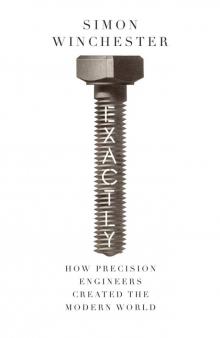 Exactly
Exactly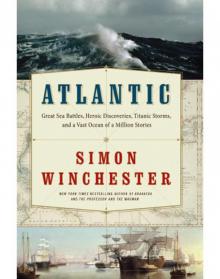 Atlantic
Atlantic Korea
Korea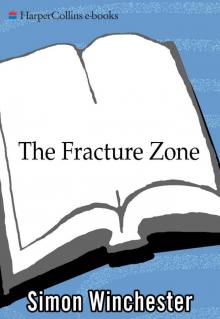 The Fracture Zone
The Fracture Zone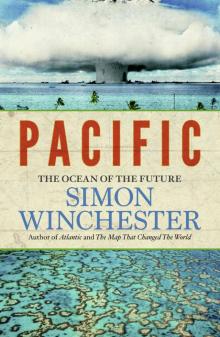 Pacific
Pacific Krakatoa
Krakatoa The Professor and the Madman
The Professor and the Madman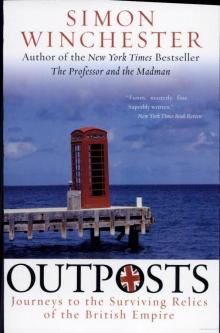 Outposts
Outposts